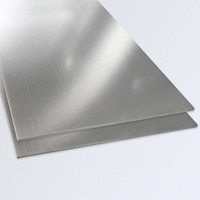| Items |

6061-T651-250-365-965
Precision Tooling Plate
|

6061-T651-250-485-965
Precision Tooling Plate
|

6061-T651-250-485-1445
Precision Tooling Plate
|

6061-T651-250-605-1445
Precision Tooling Plate
|

6061-T651-250-725-1445
Precision Tooling Plate
|
|
Material
|
N/A
Aluminum
|
|
Shapeform
|
N/A
Plates
|
|
Series
|
N/A
6061-T651
|
|
Grade
|
N/A
6061
|
|
Preparation
|
N/A
Interleaved and Stenciled
|
|
Temper
|
N/A
T651
|
|
Thickness
|
N/A
0.25 inches6.3500 mm
|
|
Thickness Tolerance
|
N/A
+0.5 inches
|
|
Size
|
N/A
36.5 x 96.5
|
N/A
48.5 x 96.5
|
N/A
48.5 x 144.5
|
N/A
60.5 x 144.5
|
N/A
72.5 x 144.5
|
|
Width
|
N/A
36.5
|
N/A
48.5
|
N/A
48.5
|
N/A
60.5
|
N/A
72.5
|
|
Length
|
N/A
96.5
|
N/A
96.5
|
N/A
144.5
|
N/A
144.5
|
N/A
144.5
|
|
Sheet Weight per Unit Area
|
N/A
3.627 lbs/ft²17.707014 kg/m²
|
N/A
|
N/A
|
N/A
|
N/A
|
|
Weight per Plate
|
N/A
88.71 lbs40.18563 kg
|
N/A
117.88 lbs53.39964 kg
|
N/A
176.51 lbs79.95903 kg
|
N/A
220.18 lbs99.74154 kg
|
N/A
263.85 lbs119.52405 kg
|
|
ASTM Specification
|
N/A
AMS-QQ-A250/11 ASTM B209
|
|
Ultimate Strength
|
N/A
45 ksi
|
|
Yield Strength
|
N/A
40 ksi
|
|
Elongation percent in 2 inches
|
N/A
12
|
|
Hardness Brinnel Number
|
N/A
95
|
|
Ultimate Shearing Strength
|
N/A
30 ksi
|
|
Fatigue Endurance Limit1
|
N/A
14 ksi
|
|
Modulus of Elasticity2
|
N/A
10.0 x 102 ksi
|
|
Resistance to Corrosion - General3
|
N/A
B
|
|
Stress Corrosion Cracking4
|
N/A
A
|
|
Workability (Cold)5
|
N/A
C
|
|
Mechinability
|
N/A
C
|
|
Brazeability6
|
N/A
A
|
|
Gas Weldability7
|
N/A
A
|
|
Arc Weldability8
|
N/A
A
|
|
Resistance Spot and Seam Weldability9
|
N/A
A
|
|
Applications
|
N/A
Heavy-duty structures requiring good corrosion resistance, truck and marine, railroad cars, furniture, pipelines
|
|
Density
|
N/A
0.098 lbs/in³
|
|
Specific Gravity
|
N/A
2.70
|


